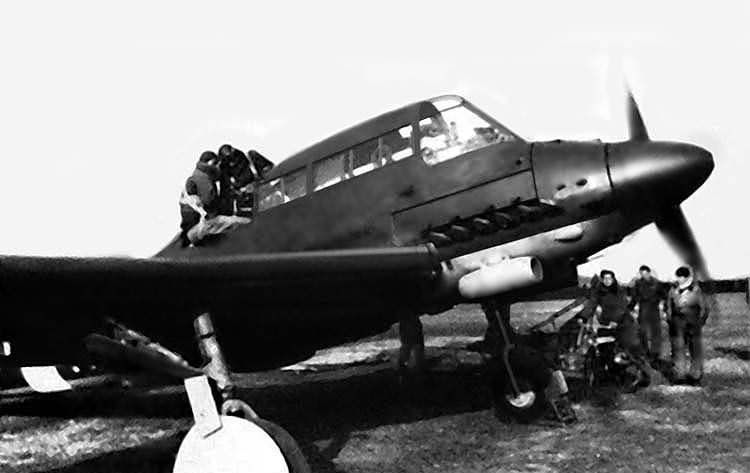Savoia-Marchetti SM.93
The Savoia-Marchetti SM.93 was an Italian dive bomber designed and produced in Italy from 1943.
The SM-93 was an all-wood single-engined low-wing monoplane with retractable undercarriage. The fuselage had a monocoque structure, with a single fin and low-set tailplane. The crew of two were accommodated under a long greenhouse-style canopy, with the pilot lying in a prone position above the rear of the engine, a Daimler-Benz DB 605A liquid-cooled V12 engine, while the gunner/radio-operator sat facing rearwards on a conventional seat. The two-spar wings were in three parts with the inner wings sharply tapered to the join, outboard of the landing gear attachments, and the outer wings moderately tapered to the rounded wingtips. The prone position for the pilot was intended to enable the pilot to resist the onset of g-induced loss of consciousness, but the position was uncomfortable for normal flight and severely limited the rearwards view of the pilot.
The SM.93 made its maiden flight on 31 January 1944, and up to 29 March 1944 the SM-93 had made 16 test-flights with speeds up to 900 kilometres per hour (560 mph) achieved in a dive, demonstrating the low drag and clean aerodynamics.
Flight testing was carried out under the aegis of the Luftwaffe and despite the good performance, the prone position was found to be unsatisfactory, being uncomfortable and restricting rearward vision. The programme was halted by the German control Commission that was running weapons production in the Repubblica Sociale Italiana – RSI after the 1943 armistice.






